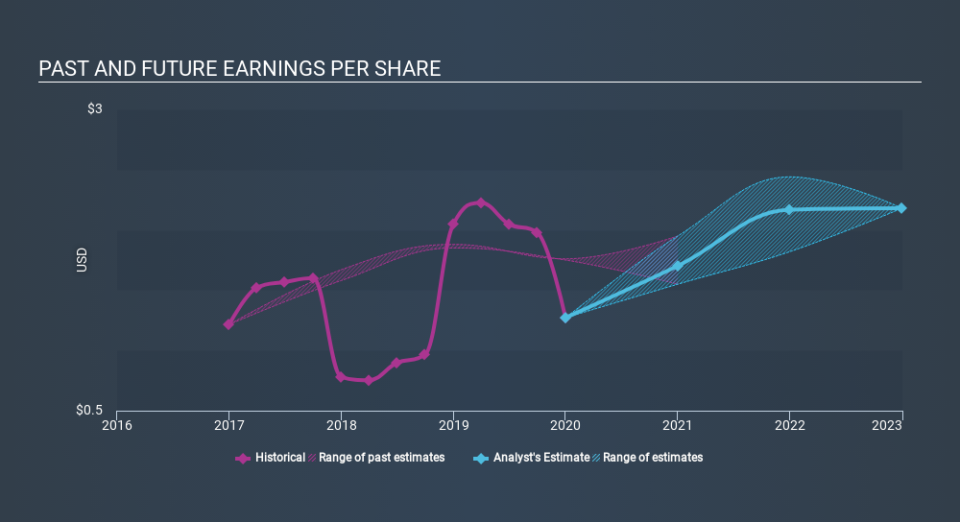Introducing FLIR Systems (NASDAQ:FLIR), The Stock That Dropped 32% In The Last Year

Passive investing in an index fund is a good way to ensure your own returns roughly match the overall market. But if you buy individual stocks, you can do both better or worse than that. For example, the FLIR Systems, Inc. (NASDAQ:FLIR) share price is down 32% in the last year. That falls noticeably short of the market return of around -6.2%. At least the damage isn't so bad if you look at the last three years, since the stock is down 7.2% in that time. In the last ninety days we've seen the share price slide 38%. But this could be related to the weak market, which is down 17% in the same period.
Check out our latest analysis for FLIR Systems
In his essay The Superinvestors of Graham-and-Doddsville Warren Buffett described how share prices do not always rationally reflect the value of a business. One flawed but reasonable way to assess how sentiment around a company has changed is to compare the earnings per share (EPS) with the share price.
Unfortunately FLIR Systems reported an EPS drop of 38% for the last year. This proportional reduction in earnings per share isn't far from the 32% decrease in the share price. Given the lower EPS we might have expected investors to lose confidence in the stock, but that doesn't seemed to have happened. Instead, the change in the share price seems to reduction in earnings per share, alone.
The company's earnings per share (over time) is depicted in the image below (click to see the exact numbers).
It might be well worthwhile taking a look at our free report on FLIR Systems's earnings, revenue and cash flow.
What about the Total Shareholder Return (TSR)?
We've already covered FLIR Systems's share price action, but we should also mention its total shareholder return (TSR). The TSR is a return calculation that accounts for the value of cash dividends (assuming that any dividend received was reinvested) and the calculated value of any discounted capital raisings and spin-offs. FLIR Systems's TSR of was a loss of 31% for the year. That wasn't as bad as its share price return, because it has paid dividends.
A Different Perspective
We regret to report that FLIR Systems shareholders are down 31% for the year (even including dividends) . Unfortunately, that's worse than the broader market decline of 6.2%. Having said that, it's inevitable that some stocks will be oversold in a falling market. The key is to keep your eyes on the fundamental developments. Longer term investors wouldn't be so upset, since they would have made 3.3%, each year, over five years. If the fundamental data continues to indicate long term sustainable growth, the current sell-off could be an opportunity worth considering. It's always interesting to track share price performance over the longer term. But to understand FLIR Systems better, we need to consider many other factors. Consider for instance, the ever-present spectre of investment risk. We've identified 3 warning signs with FLIR Systems , and understanding them should be part of your investment process.
Of course, you might find a fantastic investment by looking elsewhere. So take a peek at this free list of companies we expect will grow earnings.
Please note, the market returns quoted in this article reflect the market weighted average returns of stocks that currently trade on US exchanges.
If you spot an error that warrants correction, please contact the editor at editorial-team@simplywallst.com. This article by Simply Wall St is general in nature. It does not constitute a recommendation to buy or sell any stock, and does not take account of your objectives, or your financial situation. Simply Wall St has no position in the stocks mentioned.
We aim to bring you long-term focused research analysis driven by fundamental data. Note that our analysis may not factor in the latest price-sensitive company announcements or qualitative material. Thank you for reading.

 Yahoo Finance
Yahoo Finance 
